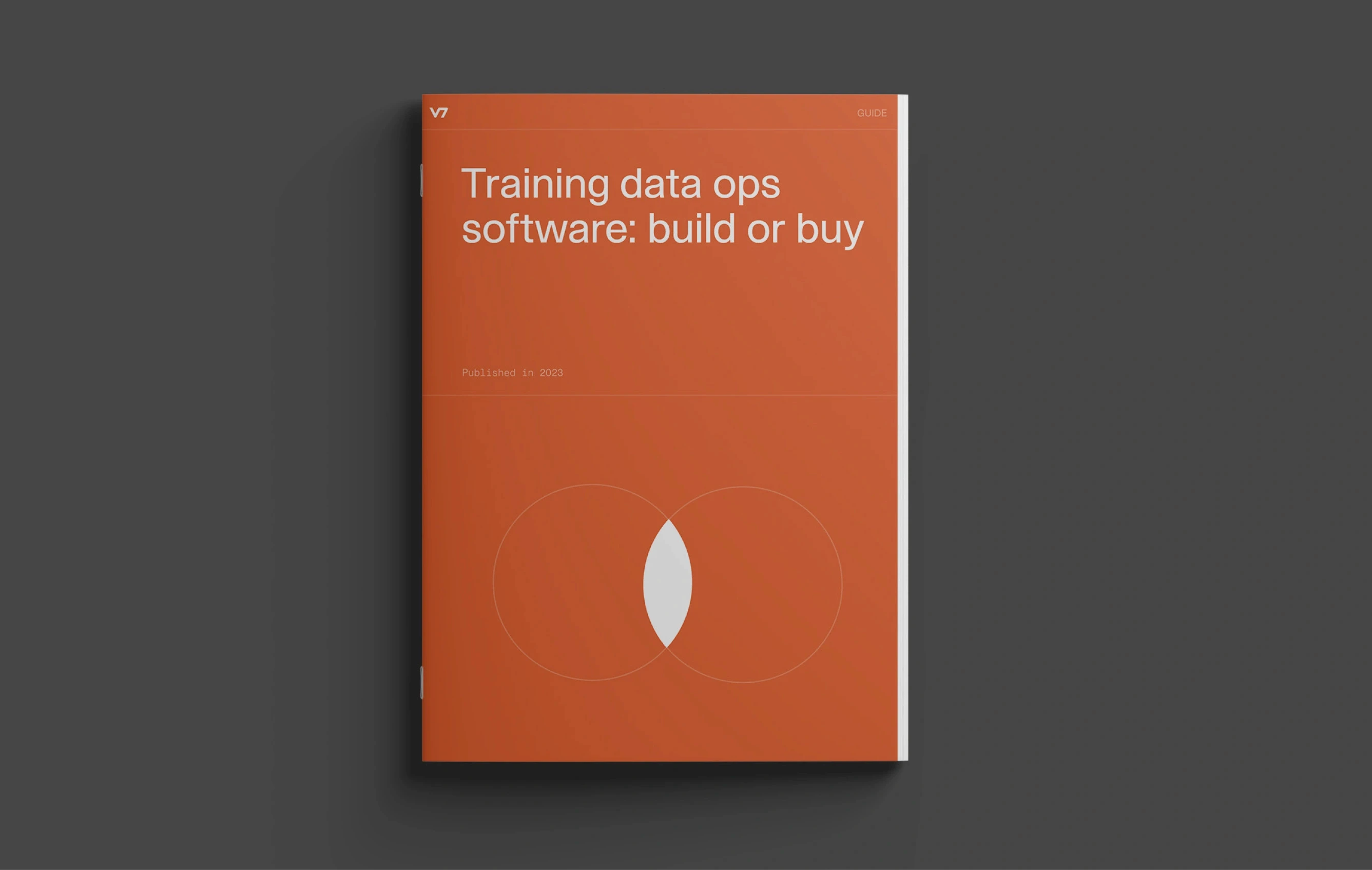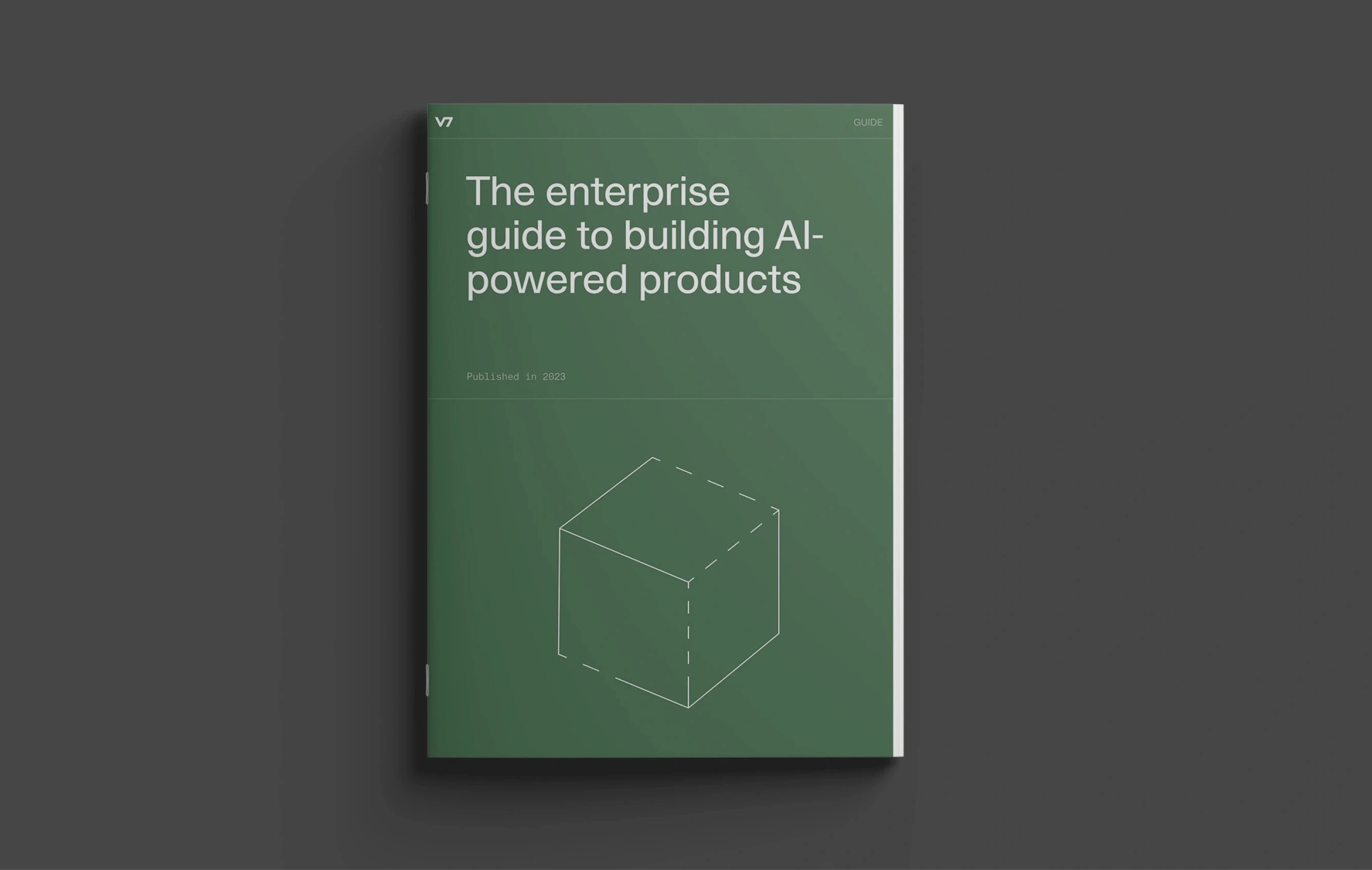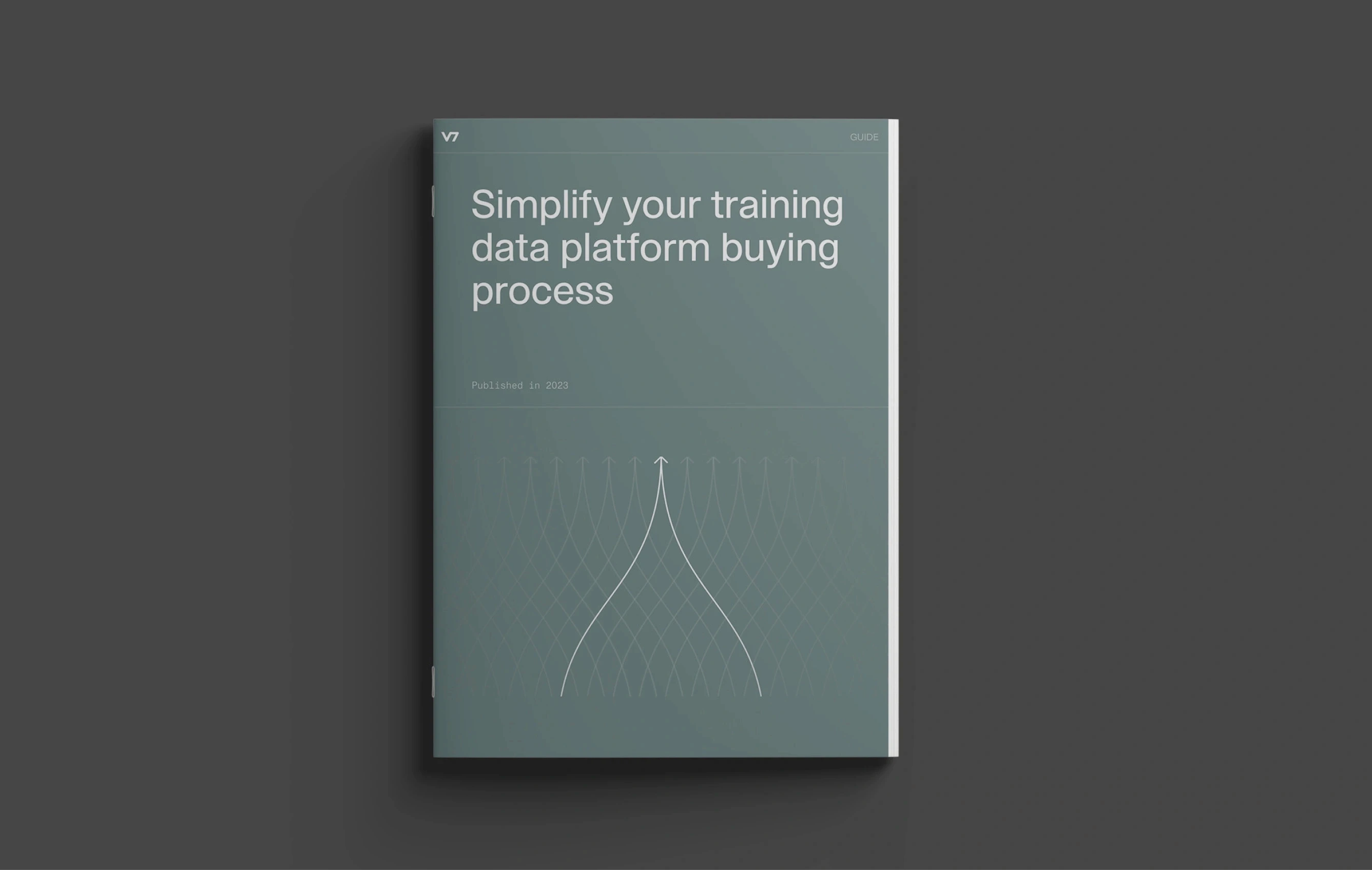12/10/2025
V7 Blog: Expert Articles on AI
V7 Blog: Expert Articles on AI
Knowledge work automation
AI in Insurance: 12 Use Cases for Underwriting, Claims & Operations
Explore 12 proven AI use cases in insurance from claims automation to underwriting. Real stats, practitioner insights, and how V7 Go solves document bottlenecks.

Knowledge work automation
Best Portfolio Management Software for Investment Firms: The Complete 2025 Guide
Compare the best portfolio management software for PE, VC, and Asset Management. Deep dives on Addepar, eFront, Allvue, and AI data ingestion with V7 Go.

Knowledge work automation
The Best AI Tools for Real Estate: A 2025 Field Guide
Discover the best AI tools for real estate across lease abstraction, property management, valuation, and more. Compare features, pricing, and ROI metrics.

Knowledge work automation
Best Software for Real Estate Investors: The 2025 Guide
Compare the best software for real estate investors across deal analysis, market research, and document processing. Deep dives on RealData, ARGUS, CoStar, and AI ingestion with V7 Go.

Knowledge work automation
AI in Wealth Management: Automating Manual Workflows
Discover how AI agents automate tax returns, trust deeds, and compliance reviews in wealth management. Learn what works, what doesn't, and how to implement AI without breaking your stack.

AI implementation
AI in Commercial Real Estate Investment (CRE): A Complete Guide for Investors and Asset Managers
This guide breaks down exactly how top firms are deploying AI to spot undervalued assets, audit risk in seconds, and secure a compounding data advantage.

Knowledge work automation
AI in Insurance: 12 Use Cases for Underwriting, Claims & Operations
Explore 12 proven AI use cases in insurance from claims automation to underwriting. Real stats, practitioner insights, and how V7 Go solves document bottlenecks.

Knowledge work automation
Best Portfolio Management Software for Investment Firms: The Complete 2025 Guide
Compare the best portfolio management software for PE, VC, and Asset Management. Deep dives on Addepar, eFront, Allvue, and AI data ingestion with V7 Go.

Knowledge work automation
The Best AI Tools for Real Estate: A 2025 Field Guide
Discover the best AI tools for real estate across lease abstraction, property management, valuation, and more. Compare features, pricing, and ROI metrics.

Knowledge work automation
Best Software for Real Estate Investors: The 2025 Guide
Compare the best software for real estate investors across deal analysis, market research, and document processing. Deep dives on RealData, ARGUS, CoStar, and AI ingestion with V7 Go.

Knowledge work automation
AI in Wealth Management: Automating Manual Workflows
Discover how AI agents automate tax returns, trust deeds, and compliance reviews in wealth management. Learn what works, what doesn't, and how to implement AI without breaking your stack.

AI implementation
AI in Commercial Real Estate Investment (CRE): A Complete Guide for Investors and Asset Managers
This guide breaks down exactly how top firms are deploying AI to spot undervalued assets, audit risk in seconds, and secure a compounding data advantage.

Recent
Recent
Recent
AI in Insurance: 12 Use Cases for Underwriting, Claims & Operations
Knowledge work automation

AI in Insurance: 12 Use Cases for Underwriting, Claims & Operations
Knowledge work automation

AI in Insurance: 12 Use Cases for Underwriting, Claims & Operations
Knowledge work automation

Best Portfolio Management Software for Investment Firms: The Complete 2025 Guide
Knowledge work automation

Best Portfolio Management Software for Investment Firms: The Complete 2025 Guide
Knowledge work automation

Best Portfolio Management Software for Investment Firms: The Complete 2025 Guide
Knowledge work automation

The Best AI Tools for Real Estate: A 2025 Field Guide
Knowledge work automation

The Best AI Tools for Real Estate: A 2025 Field Guide
Knowledge work automation

The Best AI Tools for Real Estate: A 2025 Field Guide
Knowledge work automation

Best Software for Real Estate Investors: The 2025 Guide
Knowledge work automation

Best Software for Real Estate Investors: The 2025 Guide
Knowledge work automation

Best Software for Real Estate Investors: The 2025 Guide
Knowledge work automation

AI in Wealth Management: Automating Manual Workflows
Knowledge work automation

AI in Wealth Management: Automating Manual Workflows
Knowledge work automation

AI in Wealth Management: Automating Manual Workflows
Knowledge work automation

AI in Commercial Real Estate Investment (CRE): A Complete Guide for Investors and Asset Managers
AI implementation

AI in Commercial Real Estate Investment (CRE): A Complete Guide for Investors and Asset Managers
AI implementation

AI in Commercial Real Estate Investment (CRE): A Complete Guide for Investors and Asset Managers
AI implementation

The Best Construction Document Management Software: A Complete Guide
Document processing

The Best Construction Document Management Software: A Complete Guide
Document processing

The Best Construction Document Management Software: A Complete Guide
Document processing

Best AI for Excel in 2025 (Full Comparison + Use Cases)
Knowledge work automation

Best AI for Excel in 2025 (Full Comparison + Use Cases)
Knowledge work automation

Best AI for Excel in 2025 (Full Comparison + Use Cases)
Knowledge work automation

Guides
Guides
Read our guides
Download them for free
Artificial Intelligence

2023
Download

Should you build or buy your training data operations software? In this free guide, we dive into build vs. buy dilemma and explore the pros and cons of each approach.
→
Artificial Intelligence

2023
Download

In this comprehensive guide, we break apart the process of building AI-powered enterprise products - and outline the tips, tricks, and trends for successful AI.
→
Artificial Intelligence

2023
Download

Easily compare multiple vendors with a set of free worksheets and gain clarity on which training data platform is the best choice for your team.
→
Artificial Intelligence

2023
Download

Should you build or buy your training data operations software? In this free guide, we dive into build vs. buy dilemma and explore the pros and cons of each approach.
→
Artificial Intelligence

2023
Download

In this comprehensive guide, we break apart the process of building AI-powered enterprise products - and outline the tips, tricks, and trends for successful AI.
→
Artificial Intelligence

2023
Download

Easily compare multiple vendors with a set of free worksheets and gain clarity on which training data platform is the best choice for your team.
→
Artificial Intelligence

2023
Download

Should you build or buy your training data operations software? In this free guide, we dive into build vs. buy dilemma and explore the pros and cons of each approach.
→
Artificial Intelligence

2023
Download

In this comprehensive guide, we break apart the process of building AI-powered enterprise products - and outline the tips, tricks, and trends for successful AI.
→
Artificial Intelligence

2023
Download

Easily compare multiple vendors with a set of free worksheets and gain clarity on which training data platform is the best choice for your team.
→
Artificial Intelligence

2023
Download

Should you build or buy your training data operations software? In this free guide, we dive into build vs. buy dilemma and explore the pros and cons of each approach.
→
Artificial Intelligence

2023
Download

In this comprehensive guide, we break apart the process of building AI-powered enterprise products - and outline the tips, tricks, and trends for successful AI.
→
Artificial Intelligence

2023
Download

Easily compare multiple vendors with a set of free worksheets and gain clarity on which training data platform is the best choice for your team.
→
Playbooks
Playbooks
Read our playbooks
Dive into the world of computer vision and Gen AI
Our ebooks were carefully crafted by engineers who know what they are doing. Enjoy reading them.
Playbook

Read playbook
Explore V7’s Auto-Track feature for faster video annotation. Use automated instance segmentation and object tracking across frames to reduce delivery times for video labeling projects.
→
Playbook

Read playbook
Explore V7’s Auto-Track feature for faster video annotation. Use automated instance segmentation and object tracking across frames to reduce delivery times for video labeling projects.
→
Playbook

Read playbook
Explore V7’s Auto-Track feature for faster video annotation. Use automated instance segmentation and object tracking across frames to reduce delivery times for video labeling projects.
→
Playbook

Read playbook
Discover how LLMs can impact your organization. We discuss how to automate customer service, conduct AI competitor analysis, or deploy autonomous agents within your business.
→
Playbook

Read playbook
Discover how LLMs can impact your organization. We discuss how to automate customer service, conduct AI competitor analysis, or deploy autonomous agents within your business.
→
Playbook

Read playbook
Discover how LLMs can impact your organization. We discuss how to automate customer service, conduct AI competitor analysis, or deploy autonomous agents within your business.
→
Playbook

Read playbook
Logic Stage in V7 can save time and significantly improve the quality of training data. Find out how this functionality solves real-life problems.
→
Playbook

Read playbook
Logic Stage in V7 can save time and significantly improve the quality of training data. Find out how this functionality solves real-life problems.
→
Playbook

Read playbook
Logic Stage in V7 can save time and significantly improve the quality of training data. Find out how this functionality solves real-life problems.
→
Playbook

Read playbook
Are you a pathologist looking for ways to improve your annotation of tissue samples? This article provides best practices and tips to help you speed up the process. Learn how to label and organize datasets, use auto-annotation tools, and benefit from existing datasets for digital pathology tasks.
→
Playbook

Read playbook
Are you a pathologist looking for ways to improve your annotation of tissue samples? This article provides best practices and tips to help you speed up the process. Learn how to label and organize datasets, use auto-annotation tools, and benefit from existing datasets for digital pathology tasks.
→
Playbook

Read playbook
Are you a pathologist looking for ways to improve your annotation of tissue samples? This article provides best practices and tips to help you speed up the process. Learn how to label and organize datasets, use auto-annotation tools, and benefit from existing datasets for digital pathology tasks.
→





